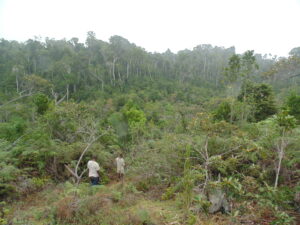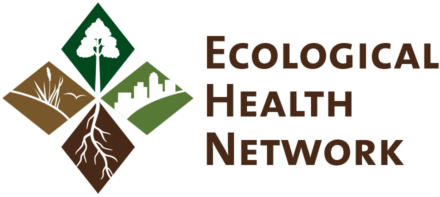Ankarabolava-Agnakatrika Forest New Protected Area
Location
Madagascar - Atsimo-Atsinanana Region, Vangaindrano District, in the Communes of Matanga, Tsianofaha, and Vohipaho
Category
Site (part of the Madagascar Research and Conservation Program EHN Hub)
Ecosystems
Low-elevation evergreen humid forest on iron crust
Land Tenure
Protected Area (designated 2015) with co-management by Missouri Botanical Garden and the local community
Contacts
Fidy Ratovoson, Missouri Botanical Garden-Madagascar Research & Conservation Program
Website
Area of the site: 1,562 hectares
Date of initiation: 2007
Institutional collaborators: Malagasy Government; Missouri Botanical Garden (MBG); Université de Fianarantsoa; IUCN Netherlands, World Land Trust, SOS Lemurs
Ecological importance of the site
• Very rare vegetation type.
• Last area of forest remaining in the district.
• Highly diverse flora with many locally endemic species known only from the region of Atsimo-Atsinanana, such as Vitex farafanganensis and Dypsis elegans.
• Seven species of lemur, all threatened: Eulemur cinereiceps (CR), Eulemur collaris (EN), Daubentonia madagascariensis (EN), Microcebus tanosi (EN), Avahi ramanantsoavani (EN), Hapalemur meridionalis (VU) and Cheirogaleus major (VU).
Socio-economic importance
• Exploited by locals for timber for the construction of traditional houses
• Forest previously used for shifting cultivation.
• Birds and lemurs previously eaten by the local population.
• Source of water for irrigation of rice fields.
• Only significant area of natural forest remaining in district
Restoration efforts underway

The Ankarabolava-Agnakatrika New Protected Area consists of two adjacent fragments of low-elevation evergreen forest, , separated by the Masianaka River. Formerly, the forest was highly threatened by shifting cultivation, unsustainable timber exploitation, and wild fires. When MBG launched its community-based conservation program at this site in 2007, 78 subsistence farmers occupied agricultural plots within the forest, and the forest therefore had ‘holes’ in many places. These farmers have traditional occupancy rights to their plots, but it is illegal for them to extend their fields. Without being able to regularly shift their crops in response to declining soil fertility, harvests were reduced and the farmers were forced to resort to desperate means to obtain their livelihoods, such as ‘accidental’ fires that allowed them to extend their cultivation. Thus, little by little, agriculture encroached into the forest.
In 2013, in an effort to seek an alternative to conflict with the forest occupants, a solution was negotiated whereby farmers within the forest would be offered the opportunity to exchange their land for productive, registered parcels of their choice outside the reserve. Currently, 62 farmers have accepted this offer, and 92.6 hectares of former agricultural land within the forest has been released. Some of this land is regenerating naturally, but in other areas, the soil is badly degraded and natural regeneration is very slow. In these areas, with the help of support from the IUCN SOS Lemur Fund and the Fondation Franklinia, reconstructive restoration of the natural forest was launched by propagating a variety of native tree species in local nurseries and, working with local students, out-planting these seedlings within the problematic zones. This work was directed and managed according to the site’s first formal restoration plan. Now, in 2024, all the acquired land excepting some 20 ha (which, funding permitting, will be targeted soon), is recovering. In total some 62.17 ha was out-planted with 147,504 tree seedlings of 93 native woody plant species. On average 12-month seedling survival was 80%, that was better than anticipated on the poor soil and exposed conditions within the restoration plots. Among the species propagated and out-planted were four trees species classified as threatened.
The success of this work enabled us to access significant support from the World Land Trust to launch a 5-year project with the aim of improving the integrity of the forest by purchasing exhausted agricultural land outside but adjacent to the projected area, launching reconstructive restoration on this land and classifying it as part of the protected area. Our target in this project is to purchase 200 ha of land at key locations and plant these areas with 500,000 seedlings of a diverse array of native trees.

Key accomplishments to date
• Development of a restoration plan.
• Release of 92.6 hectares of arable plots within the protected area for restoration: currently reconstructive restoration launched on 62.17 ha of this land. • Installation of ten local plant nurseries each with capacity to produce 50,000 seedlings of native woody plants for use in restoration.
• Implication of more than a two thousand local people in the forest restoration work
• Conception and implementation of effective Monitoring, Evaluation and Learning plan for our restoration work which has enabled us to identify which native tree species perform best in reconstructive restoration endeavors of severely degraded land.

